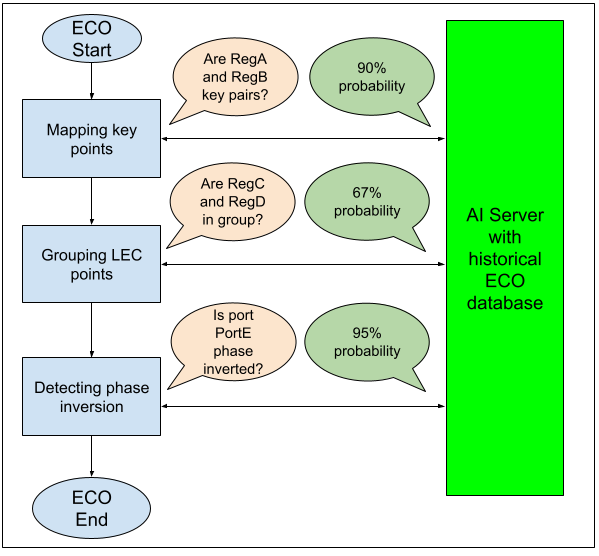ECO algorithms, particularly in functional ECO, involve numerous stages, each of which requires selecting the optimal result from a set of potential candidates. These stages can include processes like key point mapping, where the algorithm must compare hundreds of key point pairs between the reference netlist and the implementation netlist to identify the correct mapping. Similarly, during port inversion checking, the algorithm must determine whether the phase of hundreds of ports has been inverted.
These operations are computationally intensive and not easily parallelized, leading to significant processing times. This is where AI comes into play, offering a solution by extracting meaningful patterns from historical ECO data. By learning from past decisions, AI can provide informed guidance during the decision-making process, greatly enhancing efficiency.
To further streamline the ECO process, AI models can convert historical ECO data into a vector database, which stores and indexes data in a way that captures relationships and patterns between ECO decisions in past projects. At each stage of the ECO process, the algorithm can query this vector database instead of randomly processing potential candidates.
For instance, during key point mapping, the algorithm can consult the vector database, allowing the AI model to assess and score each candidate pair based on historical data. This scoring enables the ECO algorithm to rerank candidates, starting with those most likely to be optimal. Since most ECO stages allow the process to stop as soon as the best candidate is found, this drastically reduces computation time. As shown in Figure 1, the ECO algorithm consults the AI model at each decision point, and the AI model rapidly provides a probability score for each query, which is far quicker than running the full candidate process.

Figure 1: AI feedback for ECO decisions
Additionally, many ECO stages are bound by a timer. When the timer expires, the algorithm may be forced to select a candidate that is not the most optimal simply to meet timing constraints. AI can mitigate this risk by ensuring that the decision-making process is more efficient, helping the algorithm reach an optimal solution before the timer runs out. As a result, AI not only accelerates the ECO process but also improves the overall quality of the decisions made.
Incorporating AI into the ECO decision-making process presents a significant advancement in optimizing functional ECO workflows. By leveraging AI models and vector databases built from historical ECO data, the algorithm can make more informed and efficient decisions at each stage. This not only accelerates the process by prioritizing the most promising candidates but also improves the overall quality of the results by reducing reliance on time-based cutoffs. As the complexity of ECO tasks continues to grow, AI's role in streamlining these processes will only become more crucial.